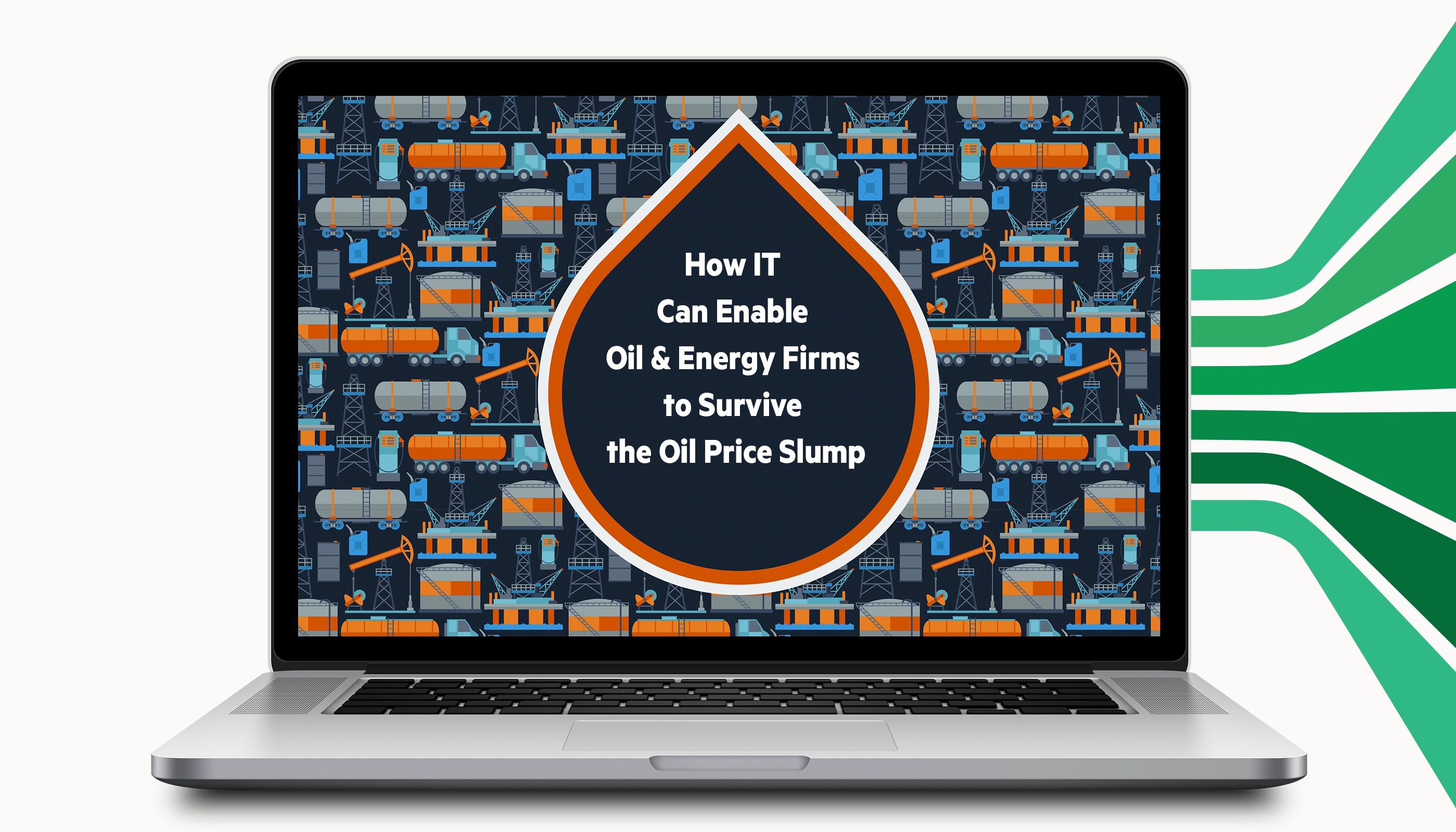Many firms in the oil sector are struggling due to the steep drop in oil prices. Across the sector there has been a reduction in investment, and in many cases downsizing. Planning for the future in these times can be tough, and changes need to be made in order to survive. However, some firms are not only working on surviving but also putting themselves in a strong position to capitalise on opportunities when oil prices eventually rise and stabilise. Furthermore, these firms are also making big changes towards digitalisation, and modernising the way they do business in spite of the slump.
Oil & Energy firms, both upstream and downstream, are typically highly complex. Equipment, assets, process, systems, applications, broad webs of suppliers and customers, and a large and varied workforce are integral to keeping everything running at a profit. Regulatory requirements are not getting looser but tighter, this all adds the huge running costs which do not get lower as the oil price does.
However, there are opportunities to be exploited. The big question is how?
Align Business & IT
Oil & Energy enterprises will typically have thousands of applications, and the associated infrastructure to run and host these systems. Therefore you should start by creating a common enterprise model accurately showing how IT systems support business processes and identify the need for process information and data. From there, you can define the key applications for development and maintenance, and importantly, identify redundant and overlapping applications to be phased out. This allows the enterprise to focus investments in the right areas. Through this process, we’ve seen oil & energy enterprises save millions of dollars annually in support & maintenance costs. Furthermore, it will allow you to focus important resources on developing a modern, digital enterprise architecture.
Adapt to New Digital Technologies
The downturn has brought forth many new technologies designed to improve efficiency and reduce costs. And they have already started making an impact. Your firm will be looking into or already implementing new automation technologies, exploiting big data, or bringing in customer focused technologies such as multichannel marketing platforms. Capital projects will still be a large feature, and ensuring all these projects run on-time and on-budget is not simple.
In order to bring in these new technologies successfully, different stakeholders and cross-functional teams will need to see how the solution fits with the current organisation, the changes that need to be made, understand the impact of change to mitigate risks. Take your enterprise model and publish this to the web so everyone can see it. Ensure those involved in change can access all the information they need to facilitate the transformation, and provide a platform for all parties to collaborate.
Set up for Rapid Reaction to Market Change
If the oil market picks up in the next 12-18 months, you need to be in a position to react rapidly to changes. A well-defined company architecture, aligned to corporate goals will allow the organisation to react quickly when the time comes. This should include each employee having access to all the information they need to do their job, get trained, and understand how they fit into the wider context.
With the slump in oil prices continuing and no concrete timeline for when it will improve, can you afford to sit tight and hope for the best? Or is it time to visualise the changes you need to make, and work together to transform your business?
Take a look at how Statoil save millions of dollars in annual IT maintenance, support and development costs through aligning IT and business. Also at GKN/Volvo Aero, the savings were in excess of $1.5million a year.



